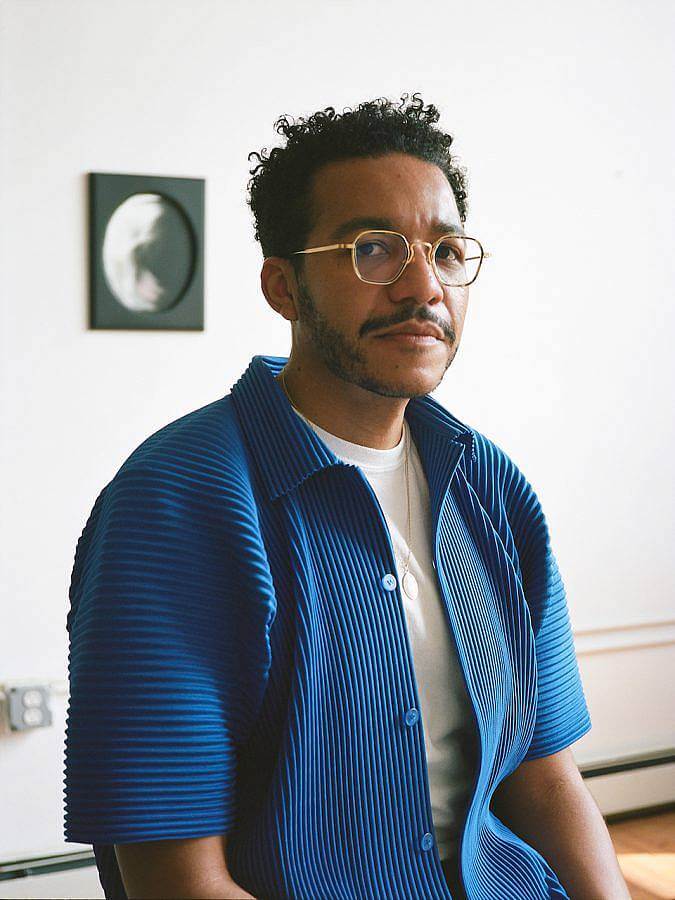What are your biggest sources of inspiration?
I would say my biggest sources of inspiration come from a curiosity in my forms of cultural output and the narratives that are conveyed through their circulation in mass culture. As an observer, sometimes walks around the city witnessing the oddity of textures, color relationships, and residue of materials spark revelations.
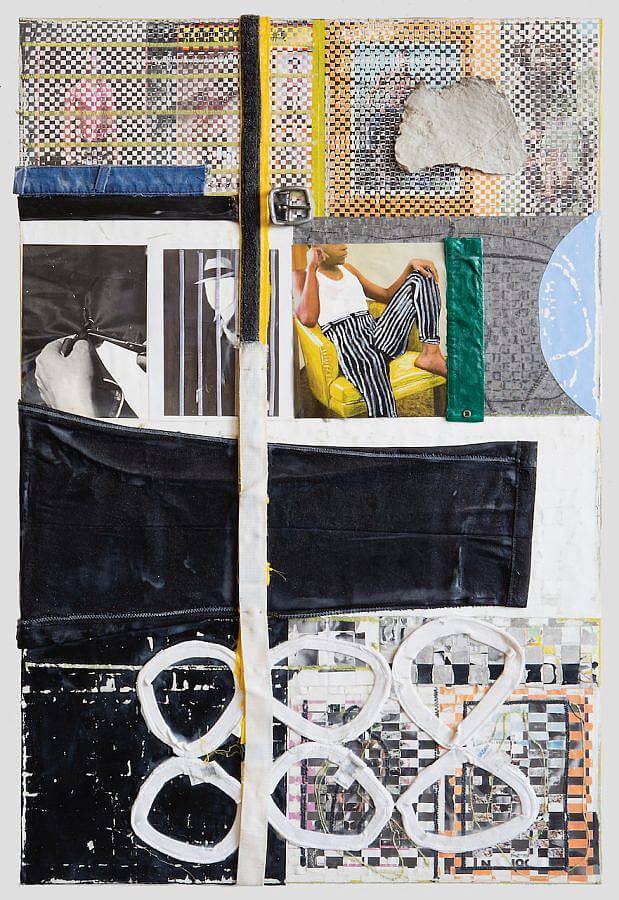
How do you go about creating your compositions? Would you say it is more instinctual or planned?
It’s a little of both. My compositions rely heavily on intuition but my materials are chosen based on project research and undergo a transformation in the studio. This intuition was built over years as my confidence and understanding of my own artistic language became clear. Many of my material transformations are built upon touch and this happens by drawing over, painting, sanding, weaving and sewing. In a way I am ciphering my own archive from the found.
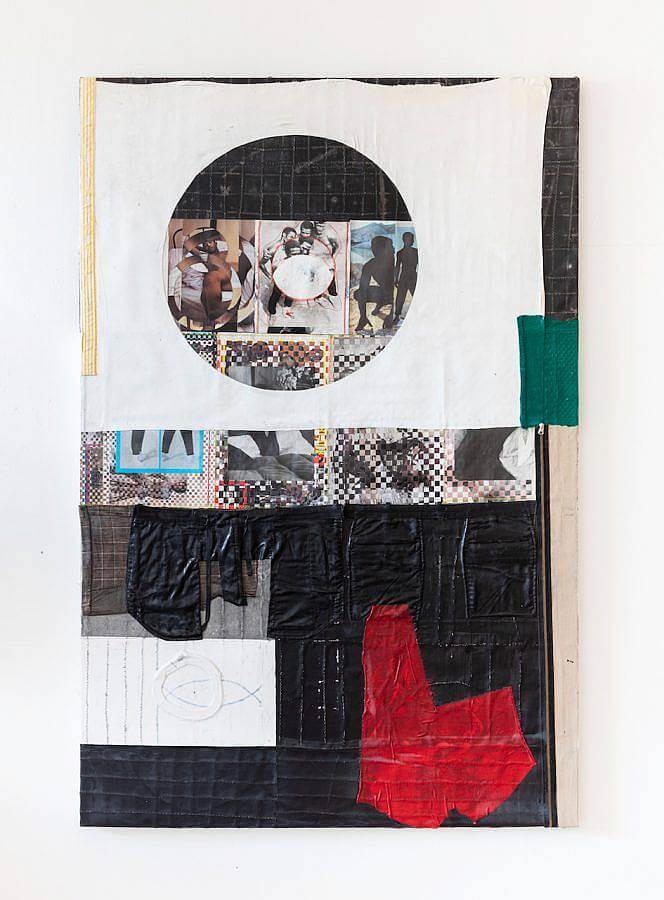
Could you speak about your recent show, Rock of Eye, at the CAMH and the driving force behind its creation?
This exhibition has been many years in the making. Initial conversations about the concept began with Andrea Andersson from the Rivers Institute in 2018. The pandemic prolonged the timeline and also changed the concept from the original discussions. Working on the catalogue as the first step with Lisa Pearson, from Siglio Press, sparked the framework for how I started to envision Rock of Eye. Oftentimes my work starts from a place of “unbinding” (magazines, books) and I wanted the catalogue to give the audience insight into my studio archive and fragmentation which eventually leads to the larger compositions. Reaching the end of the zoot suit project, I wanted Rock of Eye to be a reunion of various works throughout the six years on the project, some of which had never had never met one another. The exhibition design also centered around turning the realm of the two dimensional compositions into a terrain where the viewer could roam and cross aesthetic borders.

Your work oscillates between textile and collage, often combining the two. How did you come to develop this style of making? What is exciting to you about the intersection of the two?
I have worked in many forms of collage over the years but the intersection between sewing and textile was developed from research on tailoring. Much like method acting, my material excavations encourage sincere and expressive investigations through identifying with, understanding, and experiencing the subject’s inner motivation. Aside from the research, as an artist who discerns information through the making, it became apparent that the paper would have to be treated as fabric.
Where do you source your images & textiles from? In what ways are they significant to you?
Many of the materials come from thrift shops, rare book stores, and sellers online. If I am working on a project that has historical site specificity, I search for materials from that area. This almost feels alchemic, where the trajectory of the material has been infused with a residue that comes from its handling and circulation over time.
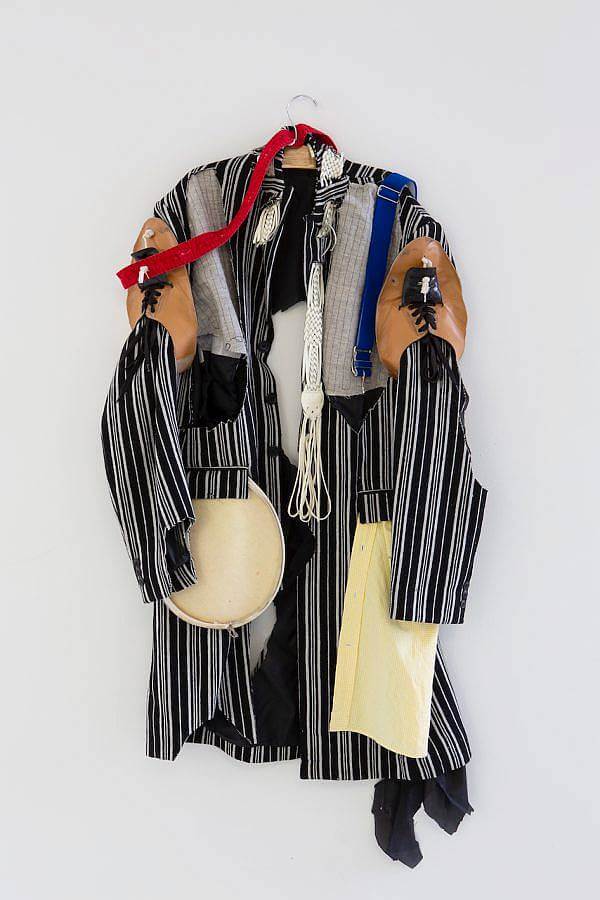
What role does your personal identity and experiences play in your work?
I would say that my identity and personal experiences play a role just like every other artists approach. As a body who is marked by histories of distortion, exaggeration, and invisibility, much of my projects are centered around reframing narratives taken as truths in the Western visual imagination. The zoot suit project began from a place of frustration due to the egregious rhetoric and mistruths around the Latinx community and the Southwestern border during the 2016 presidential election. The patterns of history are not indecipherable and repeatedly we are confronted with the criminalization of Black and Brown bodies deemed as an “other”. I don’t know if historical patterns can be broken but I am interested in that attempt especially if history is a tale told by the victor.

What are you currently reading and/or listening to?
I am currently reading The Will to Change: Men, Masculinity, and Love by bell hooks and I Always Knew: A Memoir by Barbara Chase- Riboud.
What are your hopes and fears for the future?
I have been working hard to develop a practice of being in the present moment. I have spent too many years burdened by future prospects and we all know those are not within our control.
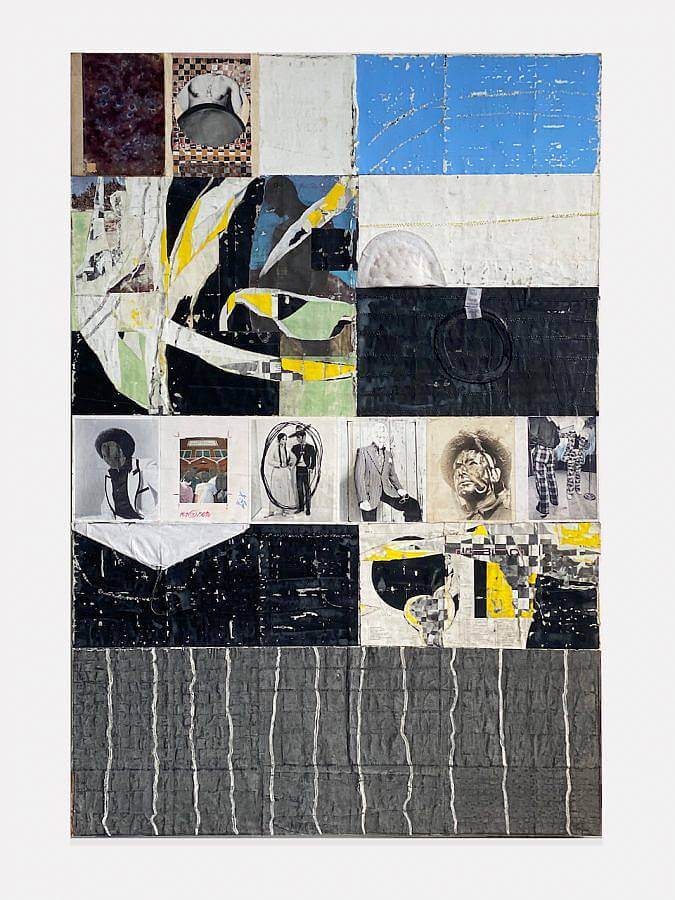
Any upcoming projects / pieces you are excited about?
Currently I am in the research phase for a new project. I recently spent time at the Amistad Research Center in conjunction with the Rivers Institute for Contemporary Art and Thought in New Orleans. I am excited about a group of archives I spent time with.
All images courtesy of Company Gallery. Interview conducted and edited by Ben Herbert.
